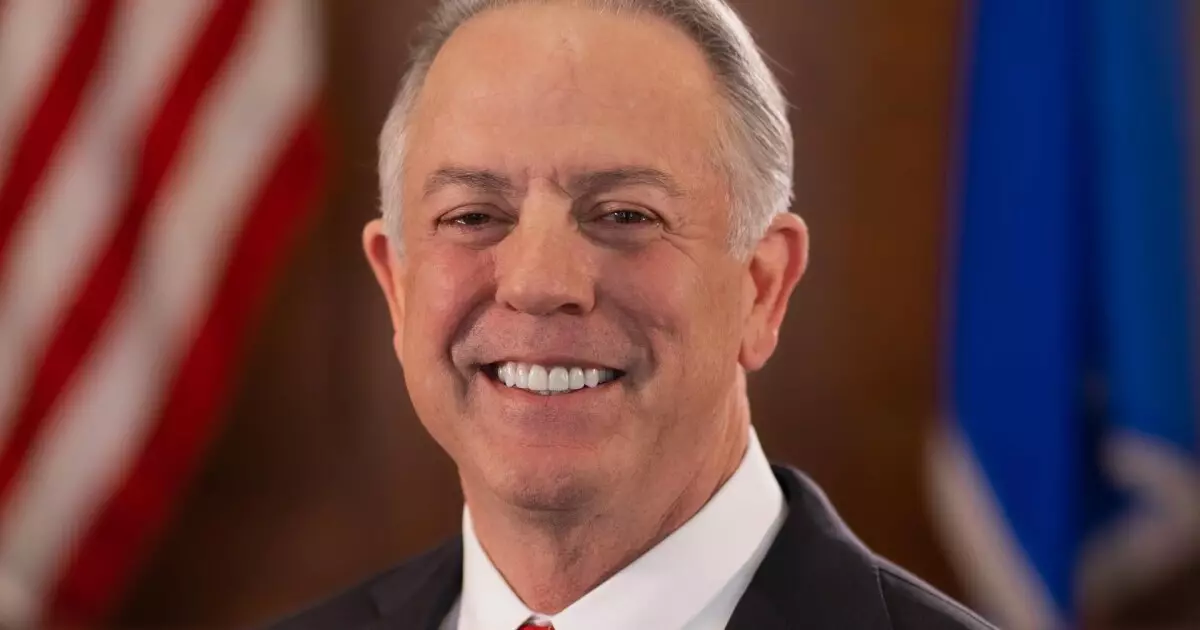In a striking move just before the commencement of the Nevada legislative session scheduled for February 3, Governor Joe Lombardo implemented a significant change in his administration by replacing his budget chief. This leadership shake-up has raised eyebrows among lawmakers and political observers, particularly against the backdrop of a contentious budget proposal that Lombardo has put forward. The appointment of Tiffany Greenameyer as the new director of the governor’s Office of Finance comes at a critical time, with the state’s financial landscape under intense scrutiny. Greenameyer, who has two decades of experience in various high-level state finance roles, will need to hit the ground running to address concerns regarding the fiscal integrity of Lombardo’s proposed budget.
Central to the commotion surrounding Lombardo’s budget proposal is its projection of a $335 million deficit, a situation that has drawn sharp criticism from Senate Majority Leader Nicole Cannizzaro. Her observations reflect a significant potential issue, as Nevada’s constitution mandates a balanced budget—a requirement that currently hangs in the balance as lawmakers prepare to dissect Lombardo’s fiscal plan. Cannizzaro’s remarks underscore a disconcerting precedent; she has articulated her disbelief over a proposal that does not clearly add up, expressing deep concern about the implications for the legislative process and the long-term financial health of the state.
The criticism marks not only a clash between party lines—Republican Lombardo versus the predominantly Democratic controlled legislature—but it also highlights a broader systemic challenge. The state had already been operating under a divided government since the governor’s election in 2022, emphasizing the difficulty of collaborative governance in such a polarized environment. This friction portends a complex negotiations landscape as legislators grapple with the inherent challenges of reaching an agreement.
In his State of the State address, Lombardo laid out ambitious plans for the state, including permanent teacher pay raises and significant investments aimed at enhancing public safety and housing. Furthermore, with his proposed budget reflecting a notable 9% increase over the previous cycle, he points to an unprecedented reserve fund of $1.3 billion as a positive indicator of Nevada’s fiscal strength. However, this optimistic portrayal is at odds with Cannizzaro’s critique regarding the budget’s balance. The peculiar juxtaposition of a surplus alongside a significant deficit raises important questions about the rationale and methodology behind budgetary planning.
Lawmakers are now under a pressing timeline, explicitly tasked with approving a budget by June 2. The procedural aspects of this process are crucial; legislators will engage in a series of deliberations over separate bills for education funding, state agency support, and capital improvement projects. Tasked with weighing the merits of Lombardo’s proposals against financial reality, legislators face a significant challenge.
As Nevada navigates this turbulent financial landscape, the outcome of the impending legislative session will resonate far beyond the current fiscal year. The implications of a budget that may not align with constitutional mandates, combined with a challenging power dynamic in Carson City, beckon heightened vigilance from both lawmakers and the public. The success of Lombardo’s administration hinges on its ability to constructively engage with legislators and incorporate diverse viewpoints into the fiscal discourse.
The road to fiscal clarity requires not only strategic leadership from Greenameyer but also a renewed commitment to collaboration among all legislative actors. The challenges posed by Lombardo’s ambitious proposals, the realities of financial constraints, and the overarching necessity for a balanced budget create a complex tapestry for Nevada’s political landscape. As discussions unfold, the stakes will be high for the future stability and health of the state’s economy, as the resolution of this budgetary conundrum will set the tone for years to come.

